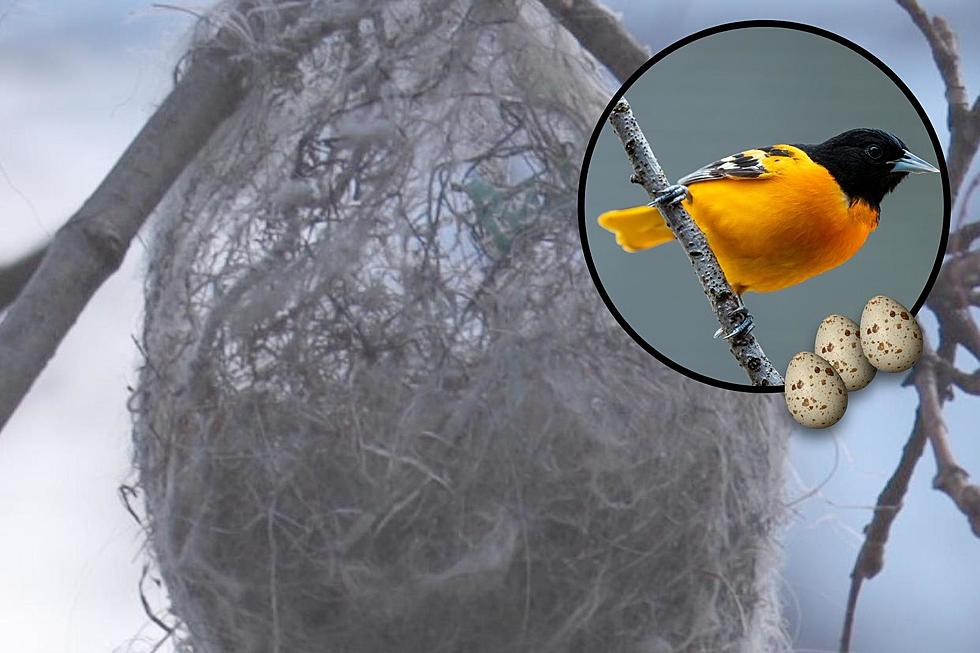
Indiana Residents If You See This in Your Tree Don’t Knock it Down
Sometimes in nature things can pop up that leave us scratching our heads, I feel like I'm constantly learning about new things in nature. Now that I own my own home things pop up all the time that has me asking "what is that? Can I leave it there? Is that normal?" And most of the time, the answer is yes!
So if you see this in your tree, don't knock it down.
What is it?
What you're looking at is a picture of an Orioles nest. When I first saw this photo, to be honest, I thought it was a photo of bagworms. Turns out I was very wrong! This is way cooler (and much more pleasant to have hanging around). The photo above was shared in a group on Facebook called Indiana Nature Lovers, by Terri Abbott. Terri shared the photo and was wondering what the structure up in her tree was, and she quickly learned it was an Oriole nest.
I thought all bird's nests kind of looked alike, but it turns out I was really wrong! Oriole's nests typically hang below branches and have this kind of sack-like look to them.
According to AllAboutBirds.org Oriole nests are distinct in the way that they hang, and they are typically found in American Elms, Maple trees, and Cottonwood trees.
Baltimore Orioles build remarkable, sock-like hanging nests, woven together from slender fibers. The female weaves the nest, usually 3 to 4 inches deep, with a small opening, 2 to 3 inches wide, on top and a bulging bottom chamber, 3 to 4 inches across, where her eggs will rest. She anchors her nest high in a tree, first hanging long fibers over a small branch, then poking and darting her bill in and out to tangle the hank.
Nature is truly fascinating!
How long will these nests be hanging around?
Once again I looked to AllAboutBirds.com and they said that the typical time it takes for an Oriole to build her nest is about a week but can take as much as 15 days. She then will lay her eggs which will hatch anywhere from 11-14 days, and then the babies will stick around for another 11-14 days.
So if you see one of these nests in your tree, they may look funny, but please make sure they stay unbothered. It's just a mama Oriole making a safe place to keep her babies for a few weeks until they're big enough to leave the nest.
Thank you Terri for allowing me to share this great photo! What an awesome find!
38 Celebrities Who Were Born in Indiana
LOOK: Stunning animal photos from around the world
WATCH OUT: These are the deadliest animals in the world
More From My WJLT 105.3









